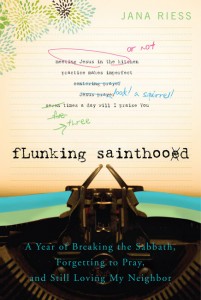Only one month remains until Lent, preachers, in case you’re counting. Not to panic, you still have ample time to plan for the Lenten season, and with this Monday Muse series I’m sharing sermon ideas to inspire not only your exegetical preparations but also the crafting of worship’s overarching mood across Lent.
So far, I’ve outlined a sermon series on the Narrative Lectionary readings from John, the Revised Common Lectionary readings from the Old Testament, and a visually-inspiring series on the paintings of Anneke Kaai.
Today, two options for a Lenten sermon series on prayer:
- a consideration of prayer themes, and
- a weekly reflection on prayer practices.
If you preach a series on prayer, however you choose to structure your series, I believe strongly that the spoken word on prayer should be accompanied by tangible, take-away prayer tools for hearers of the word. Prayer is so central to the Christian life, and it is such a source of doubt & uncertainty for many Christians. To preach on prayer without incorporating multi-sensory prayer tools only reinforces the false notion that prayer is motionless & internal, when in fact prayer is a whole-body and whole-life practice. Thus my outlines below include tangible ideas alongside thematic notes.
SERMON SERIES ON PRAYER THEMES

First Sunday in Lent — Confession (Psalm 32). We bring our sins, our transgressions, our omissions out into the open before God. Prayer tool: try Post-It notes as a way to name “aloud” one’s sins and to lay them openly before God.
Second Sunday in Lent — Discernment (Psalm 121). We look beyond us for perspective and for an understanding of God in our lives. Prayer tool: encourage congregants to use camera phones to snap pictures daily of the horizon; how far can we see with our cameras and how far are our spirits longing to see?
Third Sunday in Lent — Praise (Psalm 95). To lift up our praise fully, we not only make a joyful noise in celebration of God; we also acknowledge God’s authority as the right recipient of our praise. Prayer tool: pull out the hymnal or song book and choose a favorite hymn to sing each day.
Fourth Sunday in Lent — Creed (Psalm 23). Often our prayers assume who God is and what God does in our lives; a credal prayer pauses to name those beliefs aloud. Prayer tool: Distribute sheets of paper with the words “I believe” written at the top; invite congregants to fill the papers with their creeds.
Fifth Sunday in Lent — Plea (Psalm 130). When we cry out to God for help, after our tears dry and our sobs cease from exhaustion, we wait on God to bring about a change. Prayer tool: Silence. It’s a much-dreaded and frequently-uncomfortable prayer tool, but an important one to practice.
Sixth Sunday in Lent/Passion Sunday — Lament (Psalm 31:9-16). We honor the reality of life’s hardships and rock-bottom-places by affirming the need for lament. Prayer tool: Create space in your sermon and/or worship time for laments to be named aloud, whether in small groups gathered in pews or with the whole congregation; demonstrate through this conversation space that lament is never meant to be carried alone.
SERMON SERIES ON PRAYER PRACTICES
Of the many instructive books available on prayer practices, one that I’ve used and recommend is the very down-to-earth Flunking Sainthood: A Year of Breaking the Sabbath, Forgetting to Pray and Still Loving My Neighbor (Paraclete Press 2011). Author Jana Riess shares her experiences of practicing one new method of prayer each month for a year. Put this book in the hands of congregants, and Riess’ ideas can be practiced church-wide one week at a time throughout Lent.
First Sunday in Lent — Fasting, letting go of the feasts we consume instead of God. Prayer tool: paper plates on which congregants can draw the “feasts” that they substitute for God.
Second Sunday in Lent — Mindfulness, paying attention to God even through our daily chores. Prayer tool: pen and paper to make a detailed “to do” list.
Third Sunday in Lent — Lectio Divina, chewing slowly on scripture. Prayer tool: a Bible (not to be too obvious, lol).
Fourth Sunday in Lent — Sabbath, accepting God’s grace to be human and to pause for rest. Prayer tool: pillows and/or stuffed animals for sacred nap-time.
Fifth Sunday in Lent — Thanksgiving, recognizing the blessings already given and checking our consumerist drive for more. Prayer tool: a basket or mid-Lent benefit drive, calling us to share from God’s abundant blessings.
Sixth Sunday in Lent — Hospitality, not just welcoming the stranger but becoming friends with the stranger. Prayer tool: a welcome mat, reminding us to invite others into our lives.
And finally, here’s a shameless plug: remembering that your Lenten sermon series on prayer aims not just to talk about prayer but to impact people’s habits of prayer, consider recommending Writing to God: 40 Days of Praying With My Pen to congregants as a hands-on creative prayer tool for Lent; for elementary & middle school children, share Writing to God: Kids’ Edition to encourage kids to find their own habits of prayer.


This is so very helpful! You have sparked all kinds of ideas for our worship. Thank you!
Fantastic, Heather!
Thank you, Rachel! This is just what I needed!
Wonderful, Patti, I’m glad this post is helpful to you!
I forgot to thank you for this. It was so refreshing to have a sermon series based on spiritual disciples during Lent. It’s inspired me to possibly do it again next year using different disciplines.